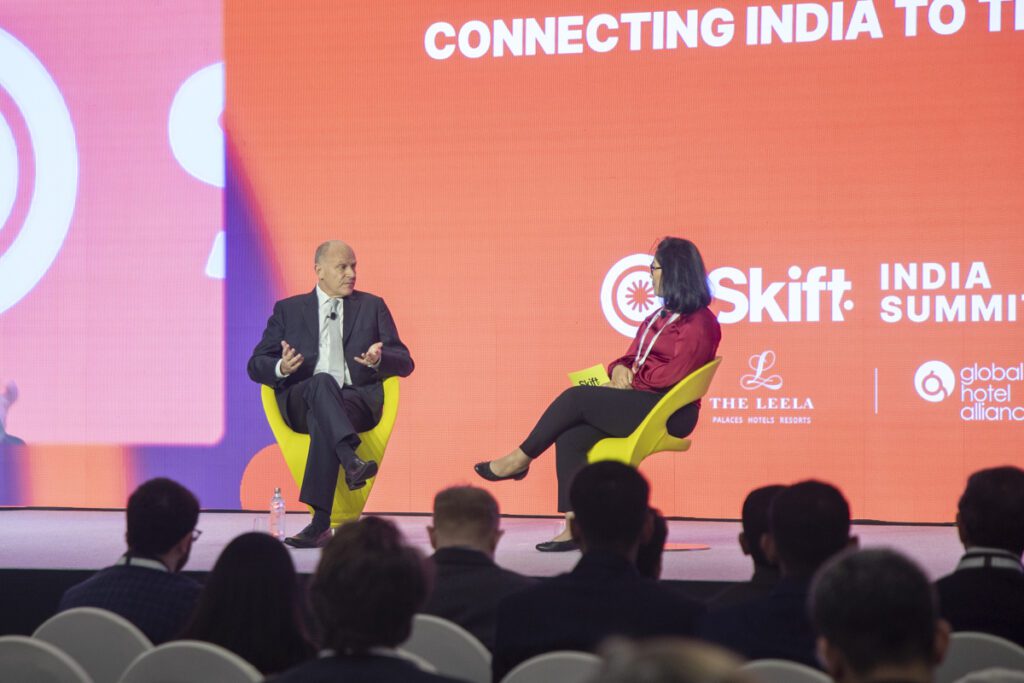
Skift Take
While the merger is a necessary step to consolidate Tata Groupâs airline assets, Air India faces stiff competition on both the international and domestic fronts. Its ability to overhaul operations, modernize services, and win back market share will determine whether it can compete effectively against heavyweights like Emirates and the ever-dominant Indigo.
Two major names in Indian aviation â Air India and Vistara â are set to become one. On November 11, Vistara will officially merge into Air India. Join Asia Editor Peden Doma Bhutia and Skift Research Analyst Ashab Rizvi as they dive into the merger, weighing whether it’s a strategic win or a potential misstep for the Tata Group.Â
Key Points
Vistara Merger with Air India: Vistara officially merges with Air India in two months from now. Vistara is known for premium service, contrasting with Air India’s outdated image and history of mismanagement. Tata’s decision to merge is likely driven by strategy, avoiding brand competition on key international routes (e.g., London).
Brand and Service Reputation: Vistara, launched in 2014, quickly became a well-loved airline. Tata’s focus is on harmonizing operations under the Air India brand to avoid internal competition.
Network and Route Strategy: Air India recently announced deploying newer aircraft, such as A350s, on long-haul routes like Delhi to London. The merger allows better network planning and overall operational efficiency for Tata.
Loyalty Programs: Club Vistara will merge with Air India’s Flying Returns program by March 31, 2026. Loyalty points will transfer on a 1:1 basis; co-branded credit cardholders will retain benefits for some time. Non-airline partnerships might face discontinuation, impacting benefits.
Air India’s Transformation: Tata has made improvements to Air India (new planes, upgraded services), but operational inefficiencies remain. Competing with Middle Eastern giants (Emirates, Etihad, Qatar) is a major challenge for Air India, especially on long-haul routes.
International Competitiveness: Air India struggles to compete with Middle Eastern carriers due to limited U.S. connectivity compared to Emirates and others. Middle Eastern airlines offer better connectivity from India, along with attractive stopover programs.
Indigoâs Market Dominance: Indigo dominates Indiaâs domestic market (60% share) and is expanding internationally. Indigo operates on many exclusive routes, offering pricing power.
Listen Now
Episode Summary
On November 11, 2024, Vistara, a beloved airline known for its premium service, officially merges into Air India. While Vistara’s loyal fans question the decision, Tata Group, which owns both airlines, seems committed to consolidating the brands to streamline operations and prevent market cannibalization. Air India, long associated with outdated service and mismanagement, is now undergoing a slow transformation under Tata’s leadership.
By merging Vistara, Tata aims to enhance network planning and optimize their long-haul operations, particularly on competitive routes like Delhi to London. Vistaraâs loyalty program, Club Vistara, will merge with Air India’s Flying Returns, offering seamless transitions for customers. However, concerns remain about the loss of some of Vistara’s exclusive airline partnerships and non-airline collaborations.
The bigger challenge for Air India, however, lies in its competition with the Middle Eastern giants such as Emirates, Etihad, and Qatar Airways, which dominate Indian international routes. While Air India is introducing new aircraft and upgrading services, its reach and network are still limited compared to these carriers. Meanwhile, Indigo, India’s largest low-cost airline, is expanding its international footprint, further intensifying the competitive landscape.
As Air India looks to the future, the merger is seen as a strategic move to improve efficiency and strengthen its global positioning. But the airline has a long road ahead, with its biggest challenge being whether it can transform fast enough to compete with other international and domestic airlines.

